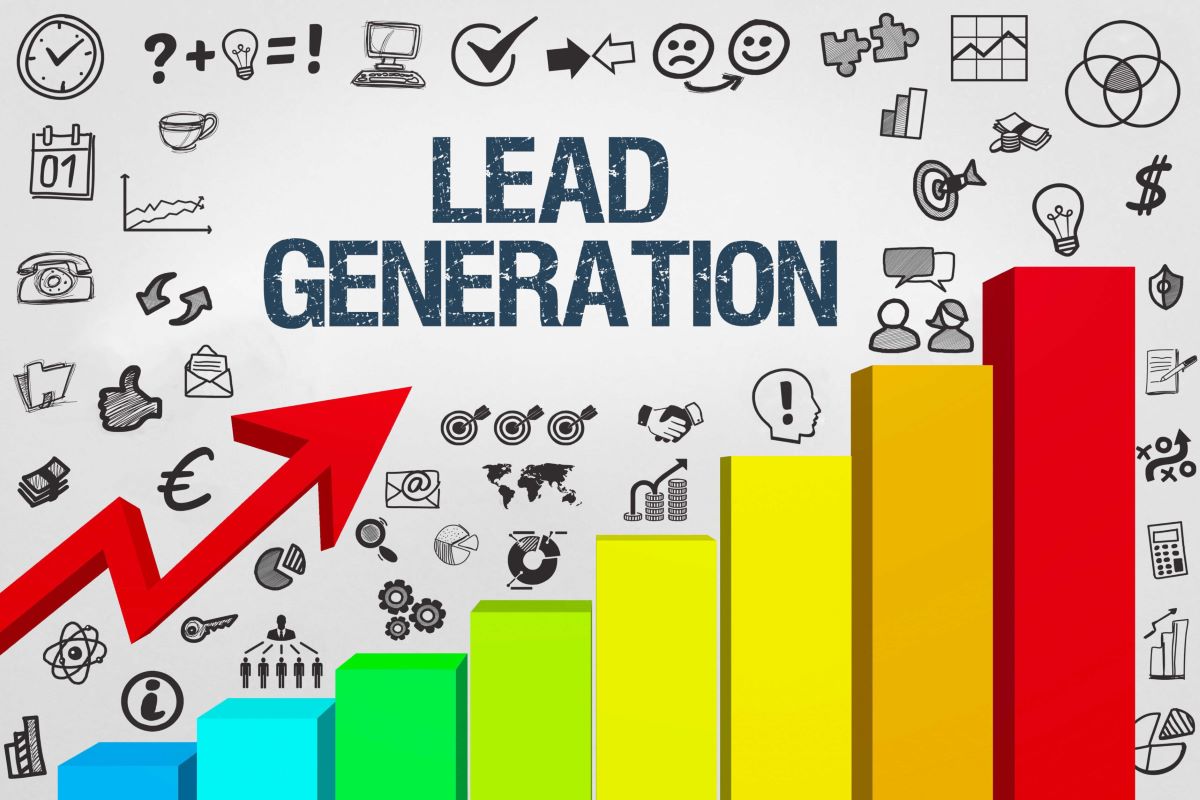

Finance
What Are Insurance Leads
Published: November 13, 2023
Looking for insurance leads in the finance industry? Learn about what insurance leads are and how they can help your finance business grow.
(Many of the links in this article redirect to a specific reviewed product. Your purchase of these products through affiliate links helps to generate commission for LiveWell, at no extra cost. Learn more)
Table of Contents
Introduction
Welcome to the world of insurance leads! In the competitive realm of the insurance industry, leads are vital for success. Whether you’re an insurance agent, broker, or company, having a steady stream of high-quality leads is crucial for business growth and profitability.
But what exactly are insurance leads? Why are they so important? And how can you generate and maximize them effectively? In this comprehensive guide, we will explore the ins and outs of insurance leads, from their definition and types to strategies for generating and nurturing them.
Insurance leads can be likened to the fuel that keeps an engine running. Without leads, insurance professionals would face a daunting challenge in finding potential clients and expanding their customer base. Leads provide a targeted list of individuals or businesses who have expressed an interest in obtaining insurance coverage.
Understanding insurance leads is essential for anyone involved in the industry. Whether you’re a seasoned professional or just starting out, the insights gained from this guide will help you navigate the competitive landscape and achieve sustainable success.
In the next section, we will delve into the definition of insurance leads, offering a clear understanding of what they involve and how they play a pivotal role in the insurance business.
Definition of Insurance Leads
Insurance leads can be broadly defined as potential customers who have shown interest in purchasing insurance products or services. These leads can come from various sources, such as online inquiries, referrals, or marketing campaigns.
When someone expresses interest in insurance by submitting a form on a website, calling an insurance agency, or requesting a quote, they become a lead. These individuals or businesses have signaled that they are open to exploring insurance options and are potential customers for insurance agents or companies.
Insurance leads can be further categorized into two main types: exclusive and shared. Exclusive leads are generated exclusively for a particular agent or company and are not shared with competitors. Shared leads, on the other hand, are typically sold to multiple agents or companies, allowing them to compete for the prospect’s business.
Leads can also be categorized based on the type of insurance they are interested in, such as auto insurance leads, life insurance leads, health insurance leads, or commercial insurance leads. This categorization helps insurance professionals tailor their marketing and sales strategies to the specific needs and preferences of each lead.
It’s important to note that insurance leads are not guaranteed conversions. Just because someone is interested in insurance doesn’t mean they will eventually make a purchase. However, leads provide a valuable starting point for insurance professionals to initiate contact and establish a relationship with potential customers.
Now that we have a clear understanding of what insurance leads are, in the next section, we will explore the importance of insurance leads and why they are crucial for the success of insurance businesses.
Importance of Insurance Leads
Insurance leads are the lifeblood of the insurance industry. They play a vital role in the success and growth of insurance professionals, whether they are independent agents, brokers, or insurance companies. Here’s why insurance leads are so important:
- Customer Acquisition: Insurance leads are the first step in acquiring new customers. Without leads, insurance professionals would struggle to find individuals or businesses interested in purchasing insurance coverage. By having a steady stream of high-quality leads, insurance professionals can focus their efforts on converting these leads into loyal customers.
- Targeted Marketing: Insurance leads provide valuable insights into the preferences and needs of potential customers. With this information, insurance professionals can tailor their marketing strategies and materials to resonate with the specific demographic and interests of each lead. This targeted approach increases the chances of converting leads into customers.
- Increased Sales: A consistent flow of insurance leads translates into higher sales and revenue. The more leads insurance professionals have in their pipeline, the greater the opportunities to close deals and generate income. Insurance leads create a platform for sales growth and financial success.
- Enhanced Efficiency: With a database of qualified leads, insurance professionals can streamline their sales and marketing efforts. By focusing on leads who have shown genuine interest in insurance, professionals can optimize their time and resources, maximizing efficiency and productivity.
- Business Expansion: Insurance leads are not only crucial for acquiring new customers but also for expanding the client base. By consistently generating leads and nurturing relationships with potential customers, insurance professionals can gain referrals and recommendations, leading to further business growth and success.
Overall, insurance leads are essential for the sustainable growth and profitability of insurance professionals. They provide a direct path to acquiring new customers, increasing sales, and expanding business opportunities. A well-managed and nurtured pipeline of insurance leads is a key ingredient for long-term success in the insurance industry.
In the next section, we will explore the different types of insurance leads and how they can vary in terms of quality and conversion potential.
Types of Insurance Leads
Insurance leads come in various types, each with its own characteristics and conversion potential. Understanding the different types of insurance leads can help insurance professionals tailor their strategies to effectively target and engage with their potential customers. Here are some common types of insurance leads:
- Internet Leads: These leads are generated through online channels such as search engine advertising, social media campaigns, or lead generation websites. Internet leads are typically self-generated by individuals searching for insurance information or requesting quotes online.
- Referral Leads: Referral leads are generated through word-of-mouth recommendations from existing customers, friends, family, or business associates. These leads often have a higher conversion rate as they come with a level of trust already established through the referral source.
- Direct Mail Leads: Direct mail leads involve sending physical mail, such as postcards or letters, to a targeted list of potential customers. The leads are generated when recipients respond to the mail by expressing interest in insurance coverage.
- Cold Leads: Cold leads refer to individuals or businesses who have not expressed any prior interest in insurance but are identified as potential customers based on demographics or other marketing criteria. Cold leads require more effort to engage and convert into customers.
- Group Leads: Group leads are generated from a specific group or association, such as employees of a company or members of an organization. These leads can be highly targeted and may have higher conversion rates due to the shared commonality and potential for bulk sales.
It’s important to note that the quality and conversion potential of insurance leads can vary across these types. Internet leads, for example, may have a higher volume but lower quality due to the potential for incomplete or inaccurate information. Referral leads, on the other hand, often have a higher quality as they come with a level of trust and recommendation.
Insurance professionals need to evaluate the different types of leads and determine which ones align best with their target market and business goals. By understanding the characteristics and potential challenges of each type, insurance professionals can develop tailored strategies to effectively engage and convert their leads into loyal customers.
In the next section, we will explore effective strategies for generating insurance leads and maximizing their conversion potential.
Generating Insurance Leads
Generating insurance leads is a crucial aspect of building a successful insurance business. Having a consistent flow of high-quality leads can help insurance professionals grow their customer base and increase sales. Here are some effective strategies for generating insurance leads:
- Online Marketing: Utilize digital marketing techniques to reach a wider audience and generate leads. This can include search engine optimization (SEO) to rank higher in search results, pay-per-click (PPC) advertising, social media marketing, content marketing, and email marketing campaigns.
- Referral Programs: Encourage and incentivize satisfied customers to refer their friends, family, and colleagues. Offering rewards or discounts for successful referrals can be an effective way to generate leads from trusted sources.
- Partnerships and Collaborations: Form strategic partnerships with complementary businesses or professionals. For example, insurance agents can partner with real estate agents or mortgage brokers to generate leads and offer comprehensive insurance solutions to home buyers.
- Networking: Attend industry events, join professional associations, and actively engage in networking activities. Building relationships with fellow professionals can lead to valuable referrals and potential collaboration opportunities.
- Content Marketing: Create informative and valuable content, such as blog posts, articles, or video tutorials, that address common questions or concerns related to insurance. By providing useful information and establishing expertise, you can attract potential leads who are seeking insurance-related guidance.
It’s important to track and measure the effectiveness of each lead generation strategy to identify what works best for your target audience. By analyzing data, testing different approaches, and refining your strategies, you can continuously optimize your lead generation efforts and maximize your results.
Remember, generating insurance leads is an ongoing process that requires consistent effort and adaptability. By implementing a combination of these strategies and staying proactive in your marketing and networking activities, you can generate a steady stream of high-quality leads and position yourself for sustainable growth in the insurance industry.
In the next section, we will explore strategies for maximizing the potential of insurance leads and increasing their conversion rates.
Strategies for Maximizing Insurance Leads
Once you have generated insurance leads, it’s crucial to implement effective strategies to maximize their potential and increase conversion rates. Here are some strategies to help you get the most out of your insurance leads:
- Responsive and Personalized Communication: Respond promptly to inquiries and provide personalized communication to potential leads. Tailor your messages to address their specific needs and concerns. Building trust and establishing a connection can greatly increase the chances of converting leads into customers.
- Nurture Leads: Not every lead will be ready to make a purchase immediately. Implement lead nurturing strategies to stay engaged with leads over time. This can include regular follow-ups, providing valuable information, and offering personalized recommendations. Building relationships and staying top of mind can significantly improve conversion rates.
- Utilize CRM Software: Invest in customer relationship management (CRM) software to effectively manage your leads. CRM systems allow you to track and organize leads, automate follow-ups, and monitor the progression of leads through the sales pipeline. This helps you stay organized, prioritize leads, and optimize your sales efforts.
- Create a Seamless User Experience: Ensure that your website and online platforms provide a seamless user experience. Optimize your website for mobile devices, make it easy for leads to navigate and find the information they need, and create clear and intuitive calls-to-action. A positive user experience can significantly improve conversion rates.
- Offer Value-Added Services: Differentiate yourself from the competition by offering value-added services to leads. This can include providing personalized policy recommendations, offering free consultations or assessments, or providing educational resources that help leads make informed decisions. By going above and beyond, you can increase trust and confidence in your services.
Remember, consistently implementing these strategies and maintaining a proactive approach is crucial for maximizing the potential of your insurance leads. Keep track of your interactions, measure your results, and adjust your strategies based on feedback and analytics. Continuous improvement is key to increasing your conversion rates and turning leads into loyal, long-term customers.
In the next section, we will discuss the importance of qualifying and nurturing insurance leads to ensure you focus your efforts on the most promising opportunities and achieve higher conversion rates.
Qualifying and Nurturing Insurance Leads
Qualifying and nurturing insurance leads is a critical step in the sales process. By properly assessing leads and nurturing their interest, insurance professionals can focus their efforts on the most promising opportunities and increase the chances of conversion. Here are some strategies for qualifying and nurturing insurance leads:
- Develop a Lead Qualification Process: Create a systematic process to qualify leads based on specific criteria. This can include factors such as the lead’s budget, insurance needs, timeline, and decision-making authority. By identifying qualified leads early on, you can prioritize your efforts and allocate resources effectively.
- Conduct Effective Needs Assessments: Take the time to understand the specific insurance needs of each lead. Ask targeted questions to gather important information and tailor your offerings accordingly. This helps build rapport, demonstrate your expertise, and present solutions that are most relevant to the lead’s situation.
- Provide Personalized Recommendations: Based on the information gathered, offer personalized insurance recommendations that align with the lead’s needs and preferences. Tailor your proposals to highlight the benefits and value of your offerings. Customized recommendations show that you understand their unique circumstances and can instill confidence in your expertise.
- Stay in Regular Communication: Regularly stay in touch with leads to maintain engagement and foster their interest. This can include sending informative content, industry updates, or relevant promotions. Keep leads informed and demonstrate your commitment to their needs, establishing yourself as a trusted resource in their insurance decision-making process.
- Offer Ongoing Support: Provide ongoing support and guidance to leads as they navigate their insurance options. This can include answering questions, addressing concerns, and offering assistance throughout the decision-making process. By providing exceptional service and support, you can build trust and strengthen the relationship with the lead.
Effective lead nurturing involves a combination of personalization, proactive communication, and continuous support. By implementing these strategies, insurance professionals can nurture leads through the sales funnel, increasing the likelihood of conversion and long-term customer retention.
It’s important to note that not all leads will convert into customers, and that’s okay. By qualifying and nurturing leads, you can focus your efforts on the most promising opportunities and improve your overall conversion rates. Remember that building relationships and establishing trust are key components of successful lead nurturing.
In the next section, we will discuss the challenges that insurance professionals may face in managing and effectively utilizing their insurance leads.
Challenges in Managing Insurance Leads
Managing insurance leads can bring its own set of challenges for insurance professionals. From lead generation to conversion, there are several obstacles that can hinder the effective management of leads. Here are some common challenges and ways to overcome them:
- Lead Generation Costs: Generating high-quality leads can be expensive, especially when utilizing digital marketing strategies or purchasing leads from lead generation companies. It’s important to carefully calculate the return on investment (ROI) and continuously evaluate the effectiveness of different lead generation channels to optimize costs.
- Lead Quality: Not all leads will be equally qualified or ready to make a purchase. Some leads may have incomplete or inaccurate information, while others may have low intent to buy. Implementing a lead qualification process and using CRM software can help filter out low-quality leads and prioritize efforts on more promising opportunities.
- Lead Nurturing Complexity: Nurturing leads can be a complex and time-consuming process. Insurance professionals need to consistently engage with leads, provide personalized communication, and offer valuable resources. Automating certain aspects of lead nurturing through CRM systems and email marketing platforms can help streamline the process and ensure consistent follow-ups.
- Competition: The insurance industry is highly competitive, with multiple agents and companies vying for the same leads. Standing out from the competition requires creativity, providing exceptional service, and showcasing unique value propositions. Building strong relationships with leads and consistently delivering value can help insurance professionals differentiate themselves in a crowded marketplace.
- Time Management: Managing a large volume of leads can be overwhelming without efficient time management strategies. Prioritize leads based on their qualification and conversion potential, and utilize automation tools to streamline routine tasks. Effective time management helps insurance professionals allocate their resources effectively and maximize their productivity.
Overcoming these challenges requires a combination of strategy, adaptability, and continuous improvement. Staying proactive, refining lead management processes, and leveraging technology can help insurance professionals navigate the complexities of lead management and achieve better results.
In the final section, we will conclude the guide by summarizing the key points discussed and emphasizing the importance of insurance leads for sustainable success in the insurance industry.
Conclusion
In the competitive world of insurance, the role of insurance leads cannot be understated. Insurance leads serve as the foundation for acquiring new customers, increasing sales, and expanding business opportunities. Through effective lead generation, qualification, and nurturing strategies, insurance professionals can leverage insurance leads to achieve sustainable success.
Insurance leads come in various types, including internet leads, referral leads, direct mail leads, cold leads, and group leads. Each type requires a tailored approach to maximize conversion potential. By understanding the characteristics and challenges of different lead types, insurance professionals can refine their strategies and focus their efforts for better results.
Generating insurance leads involves utilizing various marketing techniques, such as online marketing, referral programs, partnerships, and networking. By implementing these strategies, insurance professionals can generate a consistent flow of high-quality leads. It’s crucial to continuously evaluate and optimize lead generation efforts to maximize returns and stay ahead in a competitive market.
Once leads are generated, effective strategies for maximizing their potential come into play. Responsive and personalized communication, lead nurturing, and CRM utilization are key to nurturing leads and increasing conversion rates. By nurturing leads through personalized recommendations, ongoing support, and seamless user experiences, insurance professionals can build trust, establish relationships, and increase the likelihood of converting leads into long-term, loyal customers.
However, managing insurance leads does come with its own set of challenges. Lead generation costs, lead quality, lead nurturing complexity, competition, and time management are common obstacles that insurance professionals must navigate. By implementing efficient processes, leveraging technology, and continuously refining lead management strategies, these challenges can be overcome with success.
In conclusion, insurance leads are the backbone of a thriving insurance business. By consistently generating, qualifying, and nurturing leads, insurance professionals can drive growth, increase sales, and expand their customer base. The key lies in understanding the different types of leads, implementing effective lead generation strategies, and implementing robust lead management practices.
Ultimately, the successful utilization of insurance leads sets insurance professionals apart, allowing them to thrive in a competitive industry and achieve sustained success in the dynamic world of insurance.














